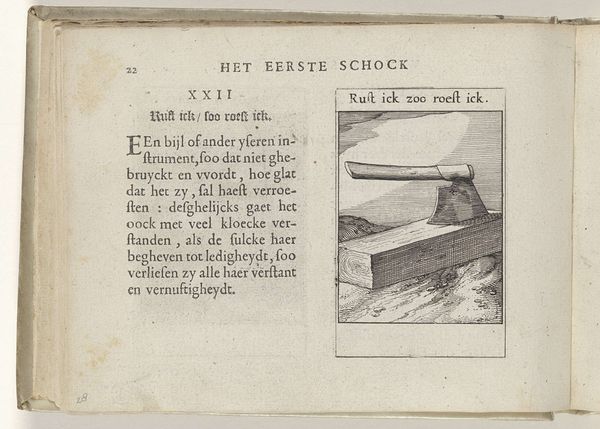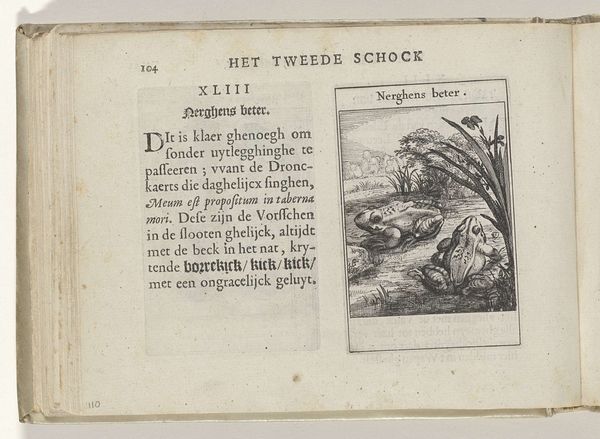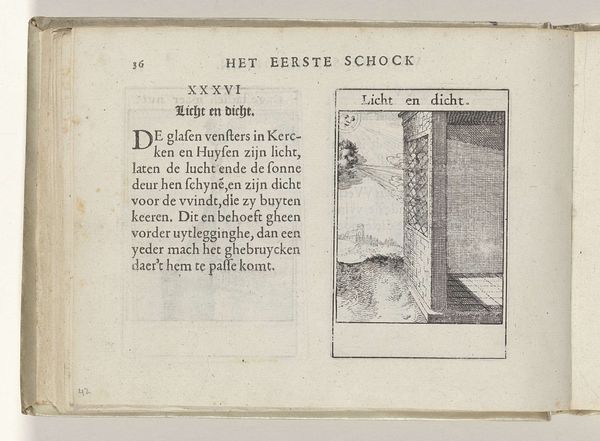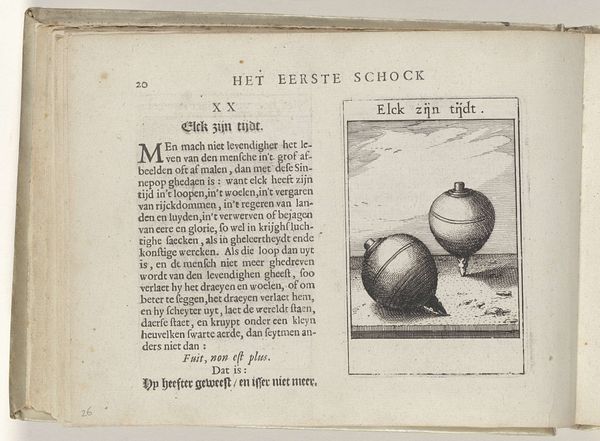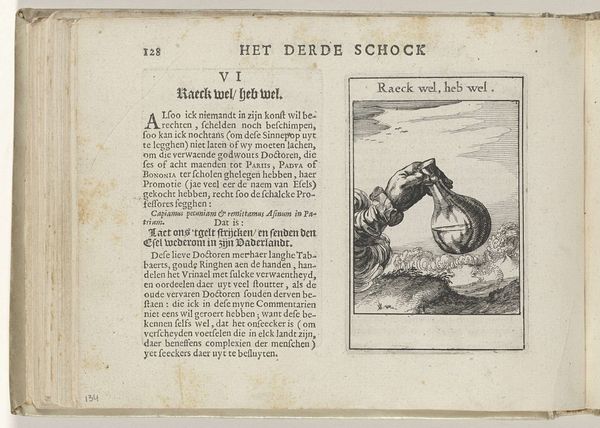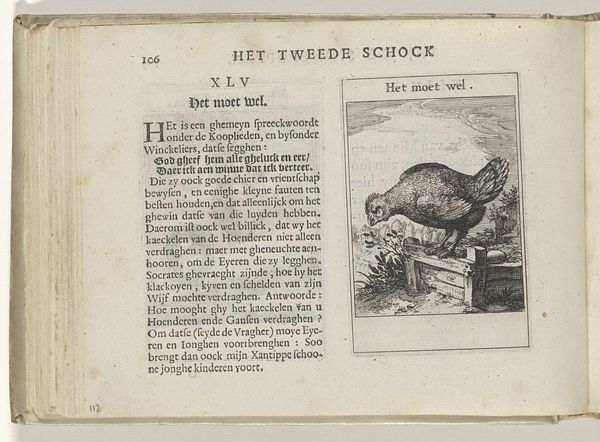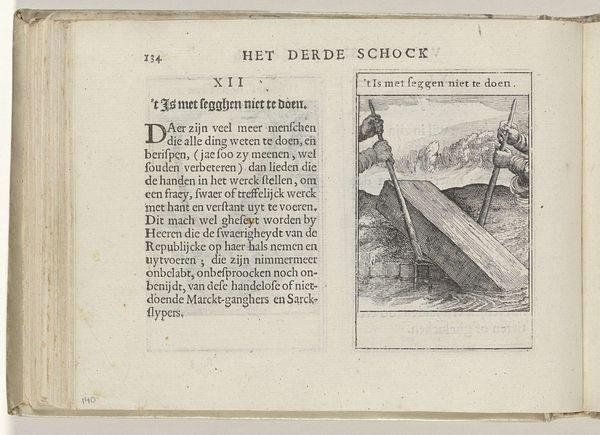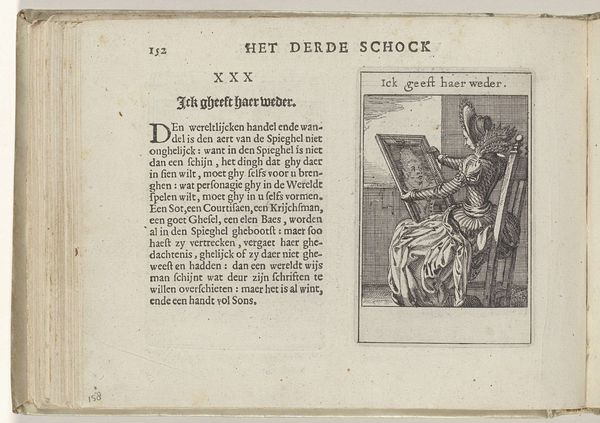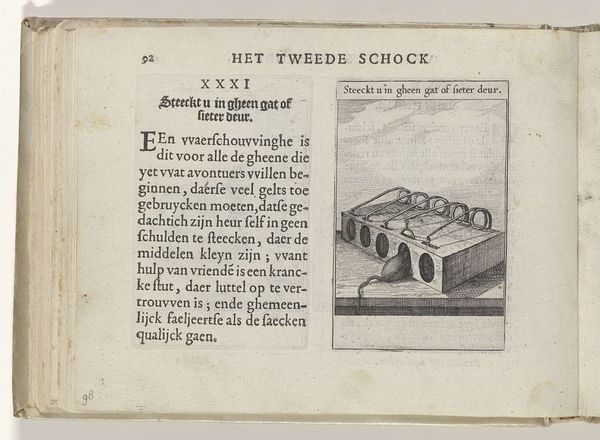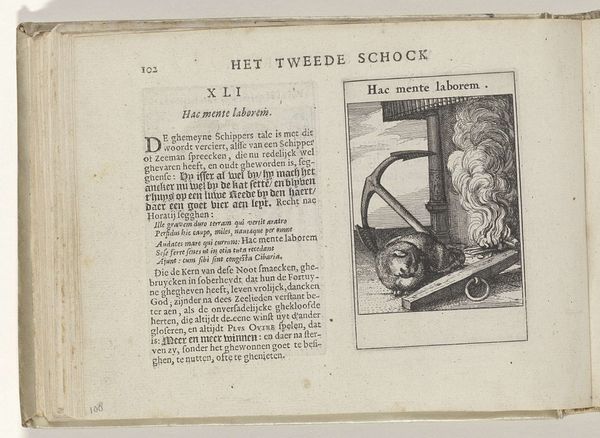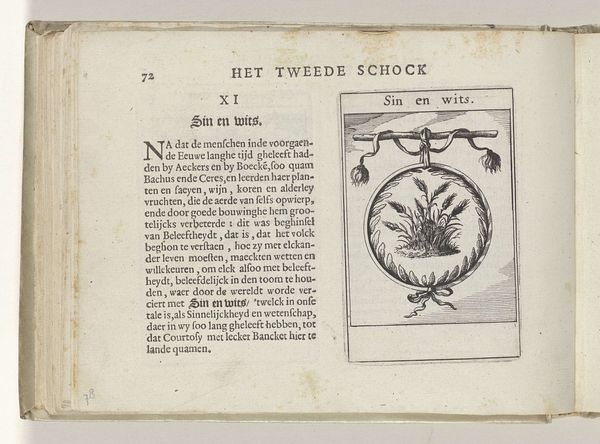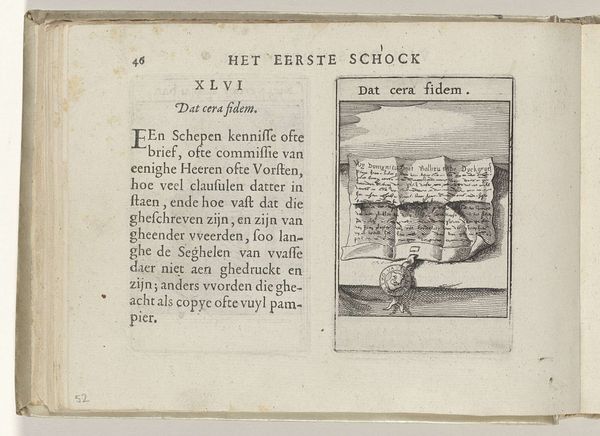
graphic-art, print, woodcut
#
graphic-art
#
medieval
#
narrative-art
#
dutch-golden-age
#
ink paper printed
# print
#
woodcut
Dimensions: height 137 mm, width 188 mm, height 95 mm, width 60 mm
Copyright: Rijks Museum: Open Domain
Curator: The woodcut print, "Beslach Alst al gheloopen is," created by Roemer Visscher in 1614, immediately strikes the viewer with its stark contrast between text and image. It's currently held in the collection of the Rijksmuseum. Editor: It does! The image depicts a very simply rendered open coffin sitting rather bleakly above ground. There’s a somewhat unsettling simplicity to the scene, almost childlike in its execution. What strikes you most about the composition? Curator: The interplay between the textual and the visual planes is key here. The title, repeated both above the text block and within the image itself, creates a linguistic frame. Observe the direct, unadorned depiction of death. The unburied coffin and digging tools suggest a disruption, a lack of completion. Editor: I see what you mean. It’s not a peaceful image, but a very raw and almost jarring commentary on death. The stark, almost crude lines amplify the effect, making it feel immediate and unromantic. The perspective of the coffin draws your eye into what will be the cavity for the deceased, do you think there's something symbolic in this? Curator: Indeed. The distortion created by the artist’s perspective heightens the anxiety within the visual field, forcing our perspective, and subsequently our introspection. Ask yourself, what purpose does the horizon line fulfill within the image, how do the diagonal slants serve to enhance emotional tensions. Editor: It definitely creates tension. So, it’s less about realistic representation and more about the impact of the scene. Curator: Precisely! Formally, this print's impact lies in its graphic language. The rough, almost primitive quality of the lines intensifies the memento mori theme, turning it into an stark visual expression. What lessons can we draw when analysing the negative spaces around the images? Editor: Thinking about form and the language of art helps see how even simple choices contribute to the work’s overall message. I appreciate learning about the artistic function behind all aspects of its display and design! Curator: And that appreciation enables us to view not just *what* we see but *how* we see, enabling understanding and expression, which, at its core, is the driving point behind Roemer Visscher's work.
Comments
No comments
Be the first to comment and join the conversation on the ultimate creative platform.
